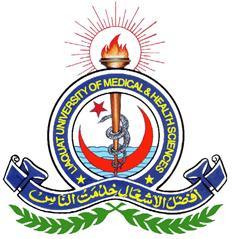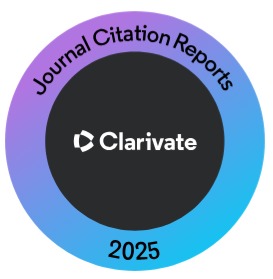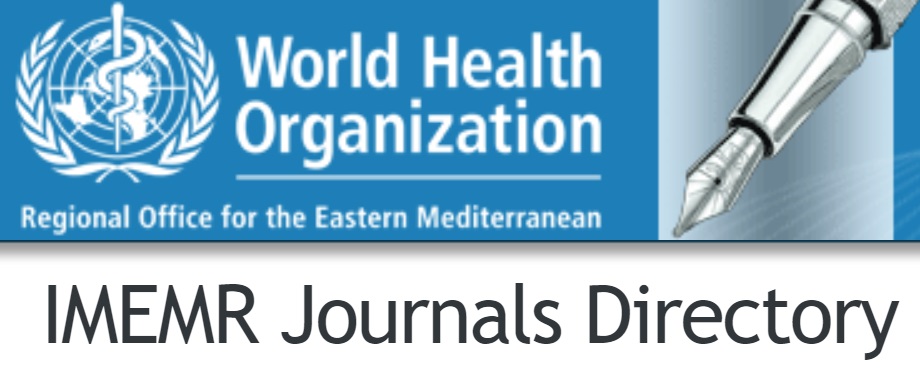Prevalence and Risk Factors of Metabolic Syndrome in Women with Polycystic Ovarian Syndrome
Keywords:
Hypertension, metabolic syndrome, obesity, polycystic ovarian syndrome, triglycerideAbstract
Objective: To find out the prevalence and risk factors of metabolic syndrome among females presenting with polycystic ovarian syndrome (PCOS) in a tertiary care setting.
Methodology: This cross-sectional study was performed at the Department of Obstetrics and Gynecology, The Combined Military Hospital (CMH), Rawalpindi, Pakistan, from January to December 2022. A total of 277 non-pregnant females aged 18-35 years and diagnosed with PCOS presenting in the outpatient department were analyzed. Metabolic syndrome was diagnosed according to the AHA/NHLBI (ATP III) definition, while PCOS was labeled as per Rotterdam consensus guidelines. Prevalence of metabolic syndrome and associated risk factors were noted.
Results: In a total of 277 women with PCOS, the mean age was 27.4±5.6 years, while 149 (53.8%) women were aged between 18 and 25. The residential status of 189 (68.2%) women was rural. There were 81 (29.2%) women with PCOS who were found to have metabolic syndrome. Waist circumference ? 80 cm (p=0.0031), HDL cholesterol < 50 mg/dl (p<0.0001), triglyceride ? 150 mg/dl (p<0.0001), hypertension (p<0.0001) and fasting blood glucose (FBG) > 110 mg/dl (p<0.0001) were having significant association with the presence of metabolic syndrome.
Conclusion: A high prevalence of metabolic syndrome was found among women with polycystic ovarian syndrome. Central obesity, hypertension and abnormal levels of FBG, triglyceride and high-density lipoprotein were found to have a significant association with MBS among women with PCOS.
References
Witchel SF, Oberfield SE, Peña AS. Polycystic ovary syndrome: Pathophysiology, presentation, and treatment with emphasis on adolescent girls. J Endocr Soc. 2019;3(8):1545-1573. doi:10.1210/js.2019-00078.
Deswal R, Narwal V, Dang A, Pundir CS. The Prevalence of Polycystic Ovary Syndrome: A Brief Systematic Review. J Hum Reprod Sci. 2020; 13(4): 261-271. doi:10.4103/jhrs.JHRS_95_18.
Christ JP, Cedars MI. Current Guidelines for Diagnosing PCOS. Diagnostics (Basel). 2023; 13(6): 1113. doi:10.3390/diagnostics13061113.
Lipsy RJ. The National Cholesterol Education Program Adult Treatment Panel III guidelines. J Manag Care Pharm. 2003 Jan-Feb; 9(1 Suppl): 2-5. doi: 10.18553/jmcp.2003.9.s1.2.
Rashmi B, Verma P, Gupta M. Study of occurrence of risk factors of metabolic syndrome in women with PCOS. Indian J Obstet Gynecol Res. 2022; 9(3): 357-360. doi: 10.18231/j.ijogr.2022.068.
Ethirajulu A, Alkasabera A, Onyali CB, Comfort A, Shah HE, Bhawani N et al. Insulin Resistance, Hyperandrogenism, and Its Associated Symptoms Are the Precipitating Factors for Depression in Women With Polycystic Ovarian Syndrome. Cureus. 2021;13(9):e18013. doi:10.7759/cureus.18013.
Calcaterra V, Verduci E, Cena H, Magenes VC, Todisco CF, Tenuta E et al. Polycystic ovary syndrome in insulin-resistant adolescents with obesity: The role of nutrition therapy and food supplements as a strategy to protect fertility. Nutrients. 2021; 13(6): 1848. doi:10.3390/nu13061848.
Barber TM, Hanson P, Weickert MO, Franks S. Obesity and polycystic ovary syndrome: Implications for pathogenesis and novel management strategies. Clin Med Insights Reprod Health. 2019; 13: 1179558119874042. doi: 10.1177/1179 558119874042.
Smet ME, McLennan A. Rotterdam criteria, the end. Australas J Ultrasound Med. 2018; 21(2): 59-60. doi: 10.1002/ajum. 12096.
Dey R, Mukherjee S, Roybiswas R, Mukhopadhyay A, Biswas SC. Association of metabolic syndrome in polycystic ovarian syndrome: an observational study. J Obstet Gynaecol India. 2011; 61(2): 176-181. doi: 10.1007/s13224-011-0020-0
Louwers YV, Laven JSE. Characteristics of polycystic ovary syndrome throughout life. Ther Adv Reprod Health. 2020; 14: 2633494120911038. doi: 10.1177/2633494120911038.
Goverde AJ, van Koert AJ, Eijkemans MJ, Knauff EA, Westerveld HE, Fauser BC et al. Indicators for metabolic disturbances in anovulatory women with polycystic ovary syndrome diagnosed according to the Rotterdam consensus criteria. Hum Reprod. 2009; 24(3): 710-717. doi: 10.1093/humrep/den433.
Bhagat A, Malhotra AS, Kaur G, Kapoor N. Metabolic syndrome: not even the urban Indian youth is spared. Indian J Physiol Pharmacol. 2017; 61(4): 368–77.
Eckel RH, Grundy SM, Zimmet PZ. The metabolic syndrome. Lancet. 2005; 365(9468): 1415-1428. doi: 10.1016/S0140-6736(05)66378-7.
Shroff R, Syrop CH, Davis W, Van Voorhis BJ, Dokras A. Risk of metabolic complications in the new PCOS phenotypes based on the Rotterdam criteria. Fertil Steril. 2007; 88(5): 1389-1395. doi: 10.1016/j.fertnstert.2007.01.032.
Dokras A, Bochner M, Hollinrake E, Markham S, Vanvoorhis B, Jagasia DH. Screening women with polycystic ovary syndrome for metabolic syndrome. Obstet Gynecol. 2005; 106(1): 131-137. doi: 10.1097/01.AOG.0000167408. 30893.6b.
Hahn S, Tan S, Sack S, Kimming R, Quadbeck B, Mann K et al. Prevalence of the metabolic syndrome in German women with polycystic ovary syndrome. Exp Clin Endocrinol Diabetes. 2007; 115(2): 130-135. doi: 10.1055/s-2007-967093.
Janssen I, Katzmarzyk PT, Ross R. Waist circumference and not body mass index explains obesity-related health risk. Am J Clin Nutr. 2004; 79(3): 379-384. doi: 10.1093/ajcn/79.3.379.
Anjum S, Askari S, Riaz M, Basit A. Clinical presentation and frequency of metabolic syndrome in women with polycystic ovary syndrome: An experience from a tertiary care hospital in Pakistan. Cureus. 2020; 12(12): e11860. doi: 10.7759/cureus.11860.
Alzeidan R, Fayed A, Hersi AS, Elmorshedy H. Performance of neck circumference to predict obesity and metabolic syndrome among adult Saudis: a cross-sectional study. BMC Obes. 2019; 6: 13. doi: 10.1186/s40608-019-0235-7.
Ren H, Guo Y, Wang D, Kang X, Yuan G. Association of normal-weight central obesity with hypertension: a cross-sectional study from the China health and nutrition survey. BMC Cardiovasc Disord. 2023; 23(1): 120. doi: 10.1186/s12872-023-03126-w.
Downloads
Published
How to Cite
Issue
Section
License
Copyright (c) 2024 Journal of Liaquat University of Medical & Health Sciences

This work is licensed under a Creative Commons Attribution-NonCommercial-ShareAlike 4.0 International License.
Submission of a manuscript to the journal implies that all authors have read and agreed to the content of the undertaking form or the Terms and Conditions.
When an article is accepted for publication, the author(s) retain the copyright and are required to grant the publisher the right of first publication and other non-exclusive publishing rights to JLUMHS.
Articles published in the Journal of Liaquat University of Medical & health sciences are open access articles under a Creative Commons Attribution-Noncommercial - Share Alike 4.0 License. This license permits use, distribution and reproduction in any medium; provided the original work is properly cited and initial publication in this journal. This is in accordance with the BOAI definition of open access. In addition to that users are allowed to remix, tweak and build upon the work non-commercially as long as appropriate credit is given and the new creations are licensed under the identical terms. Or, in certain cases it can be stated that all articles and content there in are published under creative commons license unless stated otherwise.























